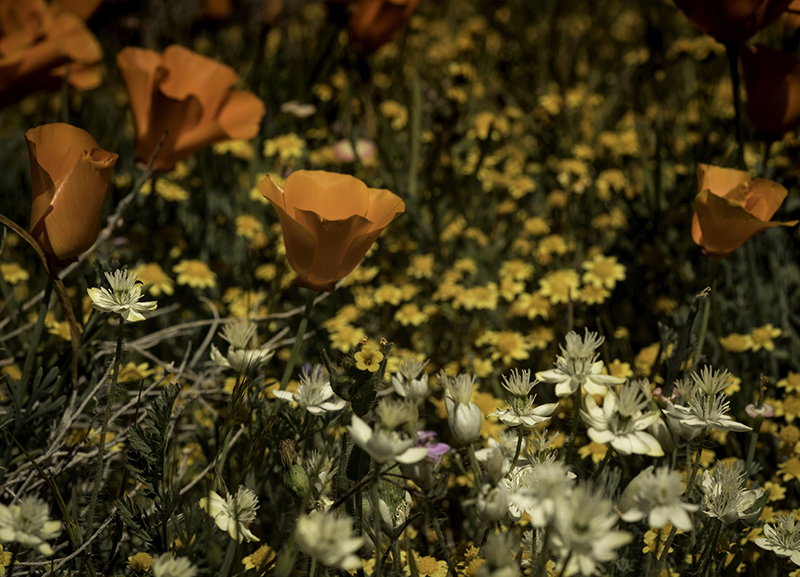
Poppies popping among more colorful blooms in a "good year," by Jane Simpson
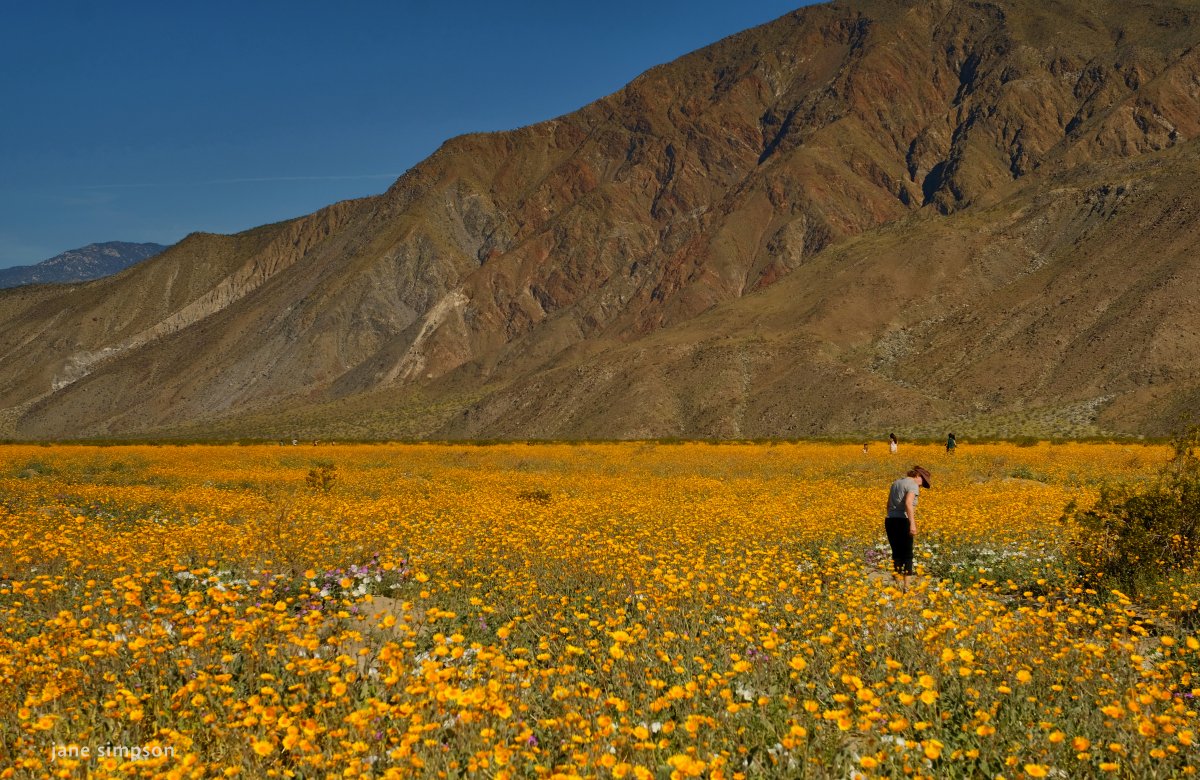
The 2017 “Superbloom,” Henderson Field, Anza Borrego. This was the scene of the biggest desert wildflower display in decades at the park. by Jane Simpson
Occasionally, the desert surprises us with an explosion of color. Dubbed a “superbloom,” this unscientific term for a phenomenal blooming season took on a life of its own when Death Valley ran amok with California Gold sunflowers in 2016. Then 2017 stole the spotlight. After years of drought, the rains started early in 2017 and kept falling during that Winter. Beneath the desert floors, thick, waxy-coated wildflower seeds began to soften and stir from their long dormancy. As the wet, cool weather continued, Anza Borrego, Joshua Tree, Carrizo Plain and the Antelope Valley Poppy Reserve areas all became blitzed by a media storm when the seeds sprouted en masse, exceeding expectations. Soon came a flood of instagrammers posing in flowers, cars lined up on dusty by-ways and photographers jockeying for a perfect shot.
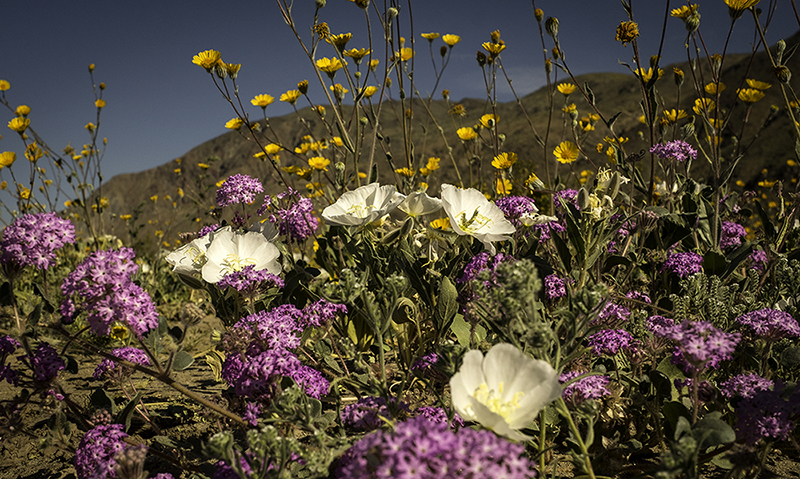
Henderson Field, Anza Borrego These low-lying eye-catchers are ephemerals - evening primrose and verbena - that have to wait decades underground before the right conditions nudge their appearance on the desert floor. What a show! by Jane Simpson
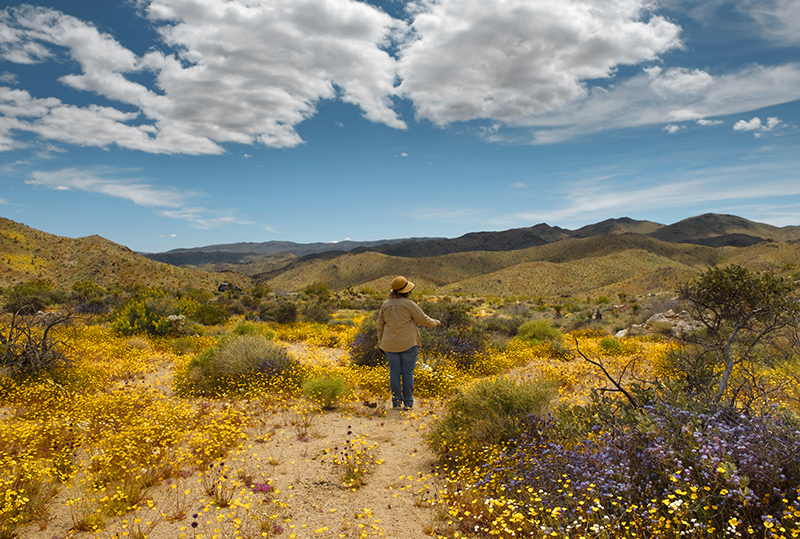
Wandering in Flowers, 2019 JTNP Bloom by Jane Simpson
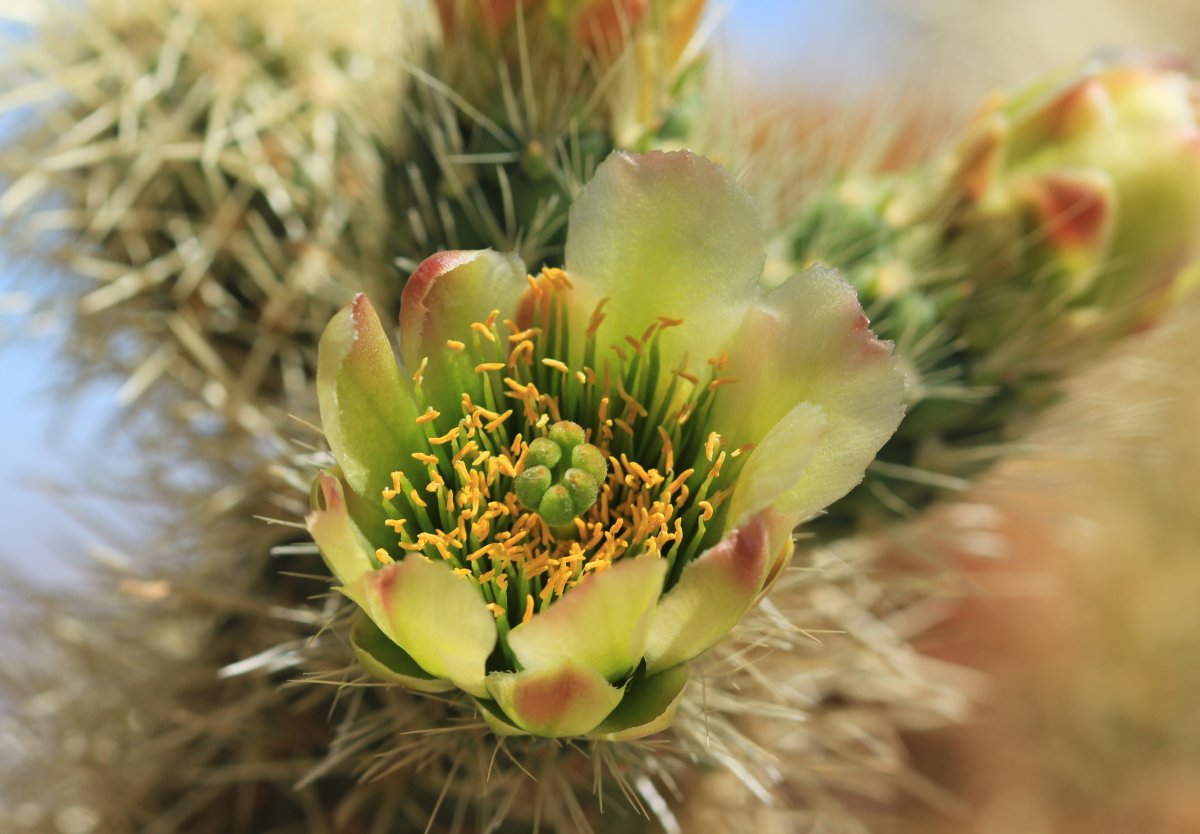
Teddy Bear Cholla in Bloom, Cholla Garden, JTNP by Jane Simpson
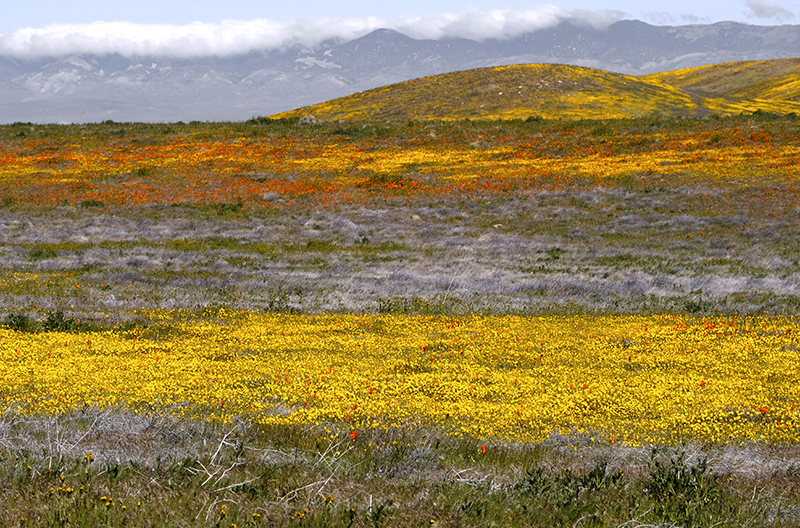
Poppies aren't the only game in town out near the Reserve, by Jane Simpson

Hedgehog Cactus. Pretty but don't get too close. by Jane Simpson
And so we wait for the next big bloom and hope it’s super.
[Header Photo by Jane Simpson]
By Jane Simpson, Leadership Training Committee Vice Chair, I rated outings leader, WTC instructor and visual artist. Jane’s professional career has run the gamut from animation to commercials and music videos, documentary work and more. Photography has always been a part of her repertoire and now it’s a chief passion whether the style is street, nature or people.
